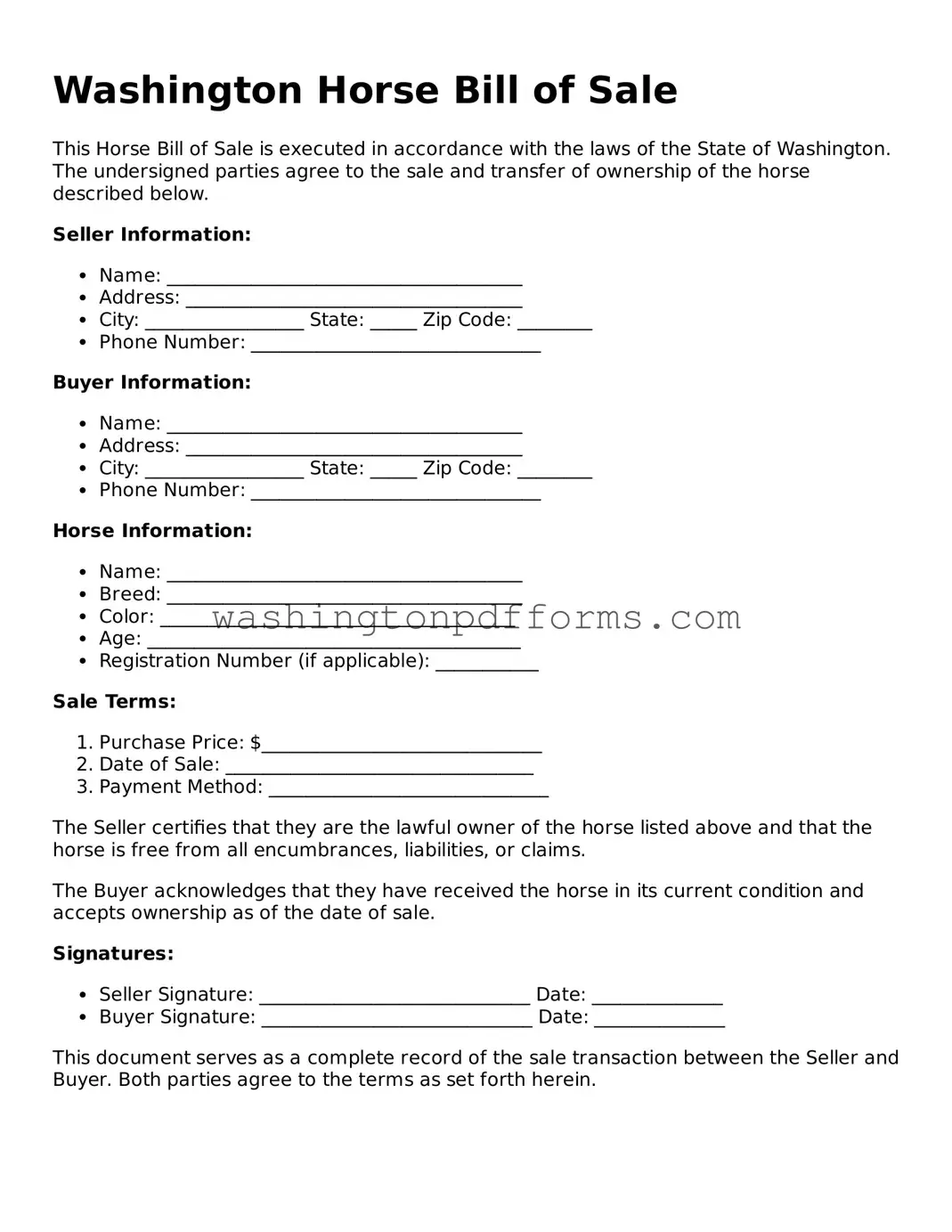Filling out the Washington Horse Bill of Sale form can seem straightforward, yet many individuals make common mistakes that can lead to complications down the line. One of the most frequent errors is failing to provide accurate identification for both the buyer and the seller. It is essential to include full names and addresses to ensure that the transaction is properly documented.
Another common mistake involves neglecting to include a detailed description of the horse being sold. This description should encompass not only the horse's name but also its breed, age, color, and any identifying markings. Without this information, disputes may arise regarding the specific horse involved in the transaction.
Many people also overlook the importance of including the purchase price. It is vital to specify the amount agreed upon for the sale. This information not only serves as a record for both parties but may also be necessary for tax purposes.
In addition, some individuals forget to sign the form. Both the buyer and seller must provide their signatures to validate the sale. A missing signature can render the document ineffective, potentially leading to misunderstandings or legal issues.
Another mistake involves not including the date of the transaction. Without a date, it becomes challenging to establish the timeline of ownership. This can be particularly important if any disputes arise regarding the horse's condition or ownership status after the sale.
Moreover, individuals often fail to make copies of the completed form. Keeping a copy for personal records is crucial, as it provides proof of the transaction and can be referred to in the future if any questions arise.
Some people also neglect to check for any outstanding liens or debts associated with the horse. Before finalizing the sale, it is wise to ensure that the horse is free of any financial encumbrances. This step protects the buyer from inheriting any unexpected liabilities.
Additionally, individuals may not realize the importance of including any warranties or guarantees related to the horse's health or behavior. Clearly outlining any promises made during the sale can help prevent misunderstandings later on.
Finally, it is essential to remember that the Horse Bill of Sale form may require notarization in certain circumstances. Failing to have the document notarized when necessary can lead to complications regarding its legitimacy. Taking the time to carefully complete the form can save both parties from potential issues in the future.
